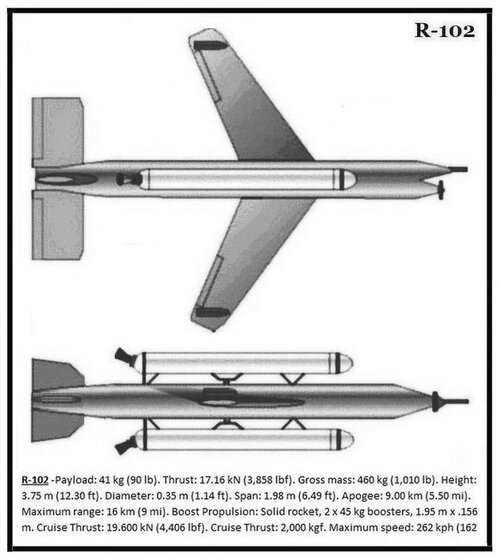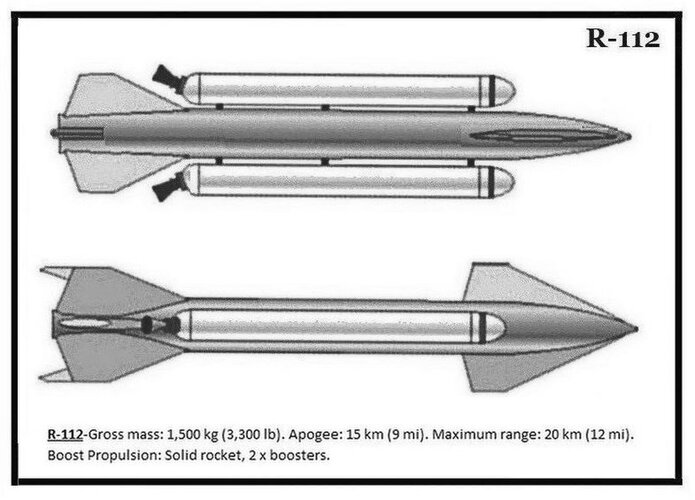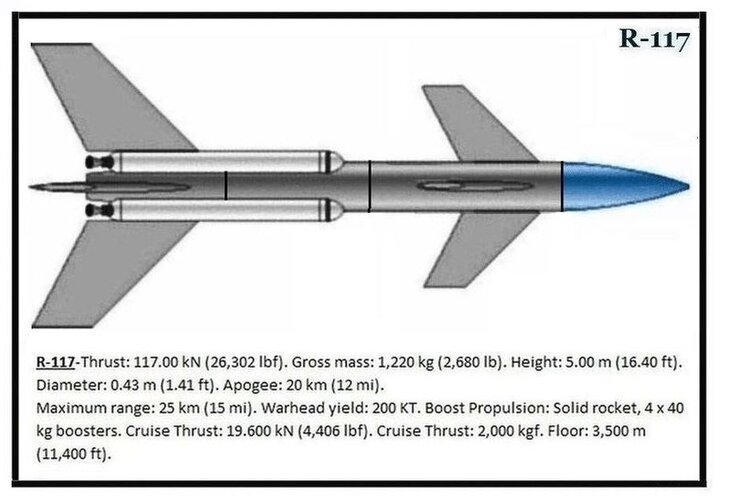klem
I really should change my personal text
- Joined
- 7 March 2015
- Messages
- 701
- Reaction score
- 1,515
R-102 : During the war it was not only the Soviets who devoted an interest to the German missiles, all the other allies did the same. With the end of the war the Soviets were activating and deployed their efforts at Berlin by constituting expert groups for the achievement of their objectives to appropriate this know-how. A search of information, documents and technical staff was carried out and the creation of research establishments and experimental laboratories during the year 1946 for section 5 under the direction of the designer -in -chief Semyon Yevelyevich Rashkov of the NII-88 in charge of several projects, among other things, the HS 117 Schmetterling a surface-to-air missile. Soviet engineers with the help of their German homologues succeeded in bringing together the documentation and drawings sufficient to start the work of reproduction of the missile designated by the Soviets R-102. By the fall of 1949 the first prototype was completed at Factory 88. The first series tests launches was planned for 1949 ,16 test flights were made at Kapustin Yar between 18 October and 19 December 1949.The initial R-102 needed a development. So it was also planned to develop a modified version R-102M . During the year 1949, 20 improved prototypes had to be completed by the NII-88 for tests at Kapustin Yar aware of the year 1950, but the R-102 was canceled in favor of a more advanced derivative the R-112 which had to solve certain problems encountered by the R-102.



